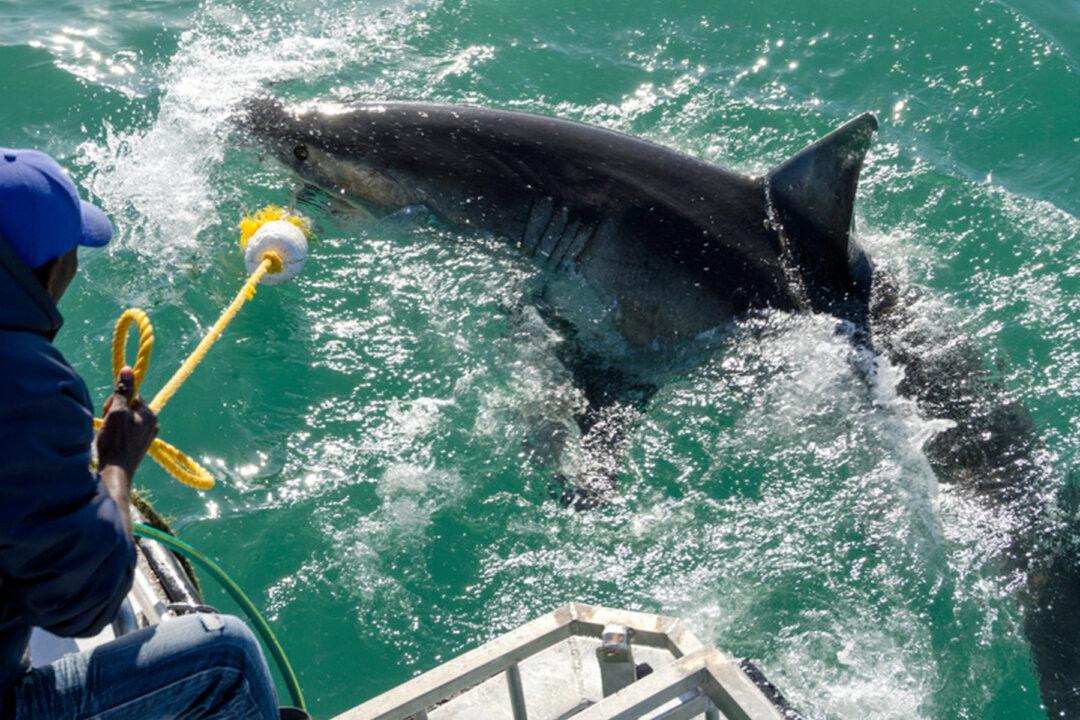A huge great white shark has caused an excitable stir by showing up off the coast of North Carolina.
The 12-foot male great white, given the name “Ironbound,” was tracked swimming near Bald Head Island off the coast of North Carolina on May 11, 2020. A marine tracking device placed on him led researchers to nearby Pamlico Sound the night prior.





